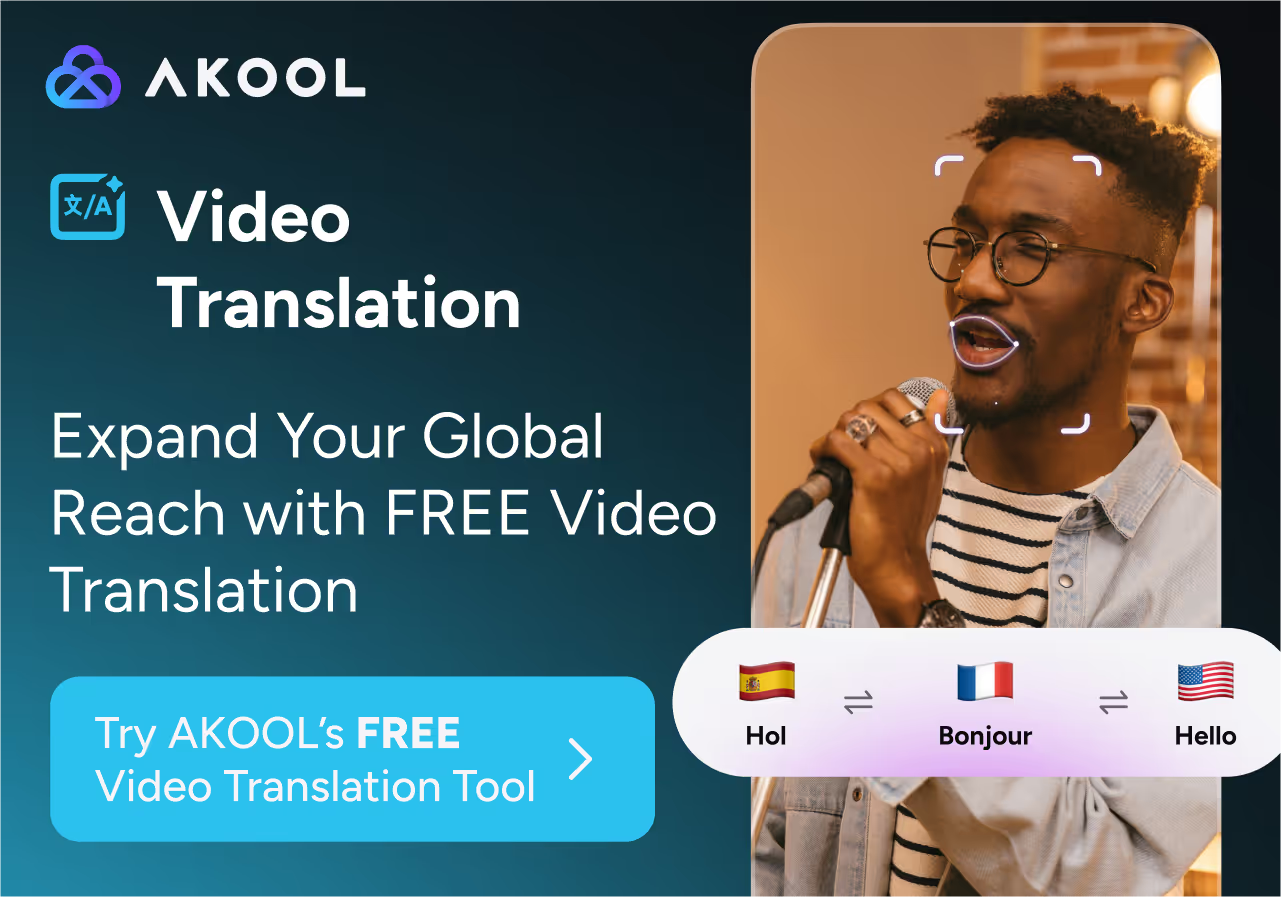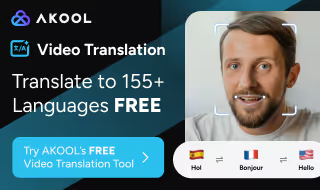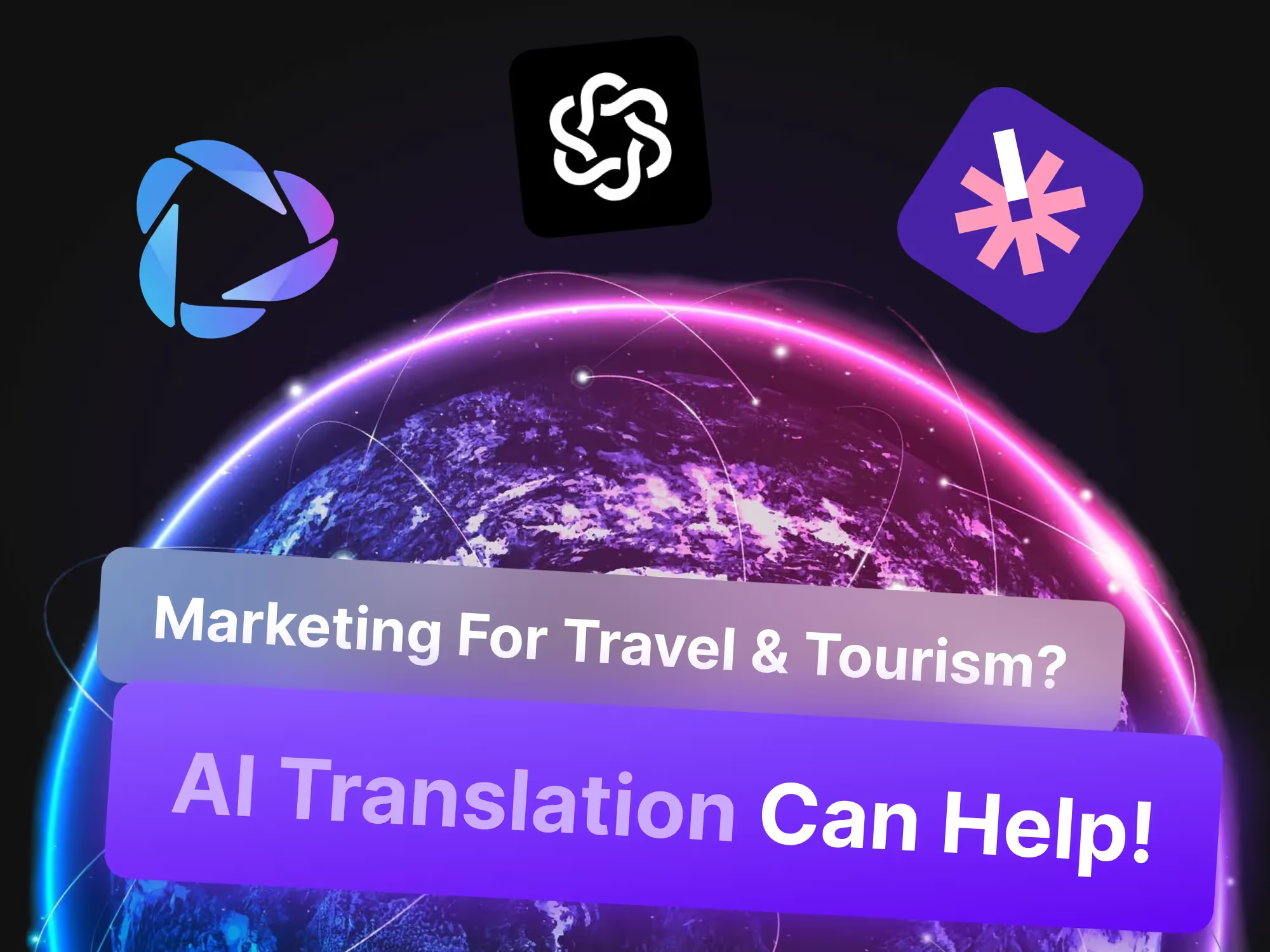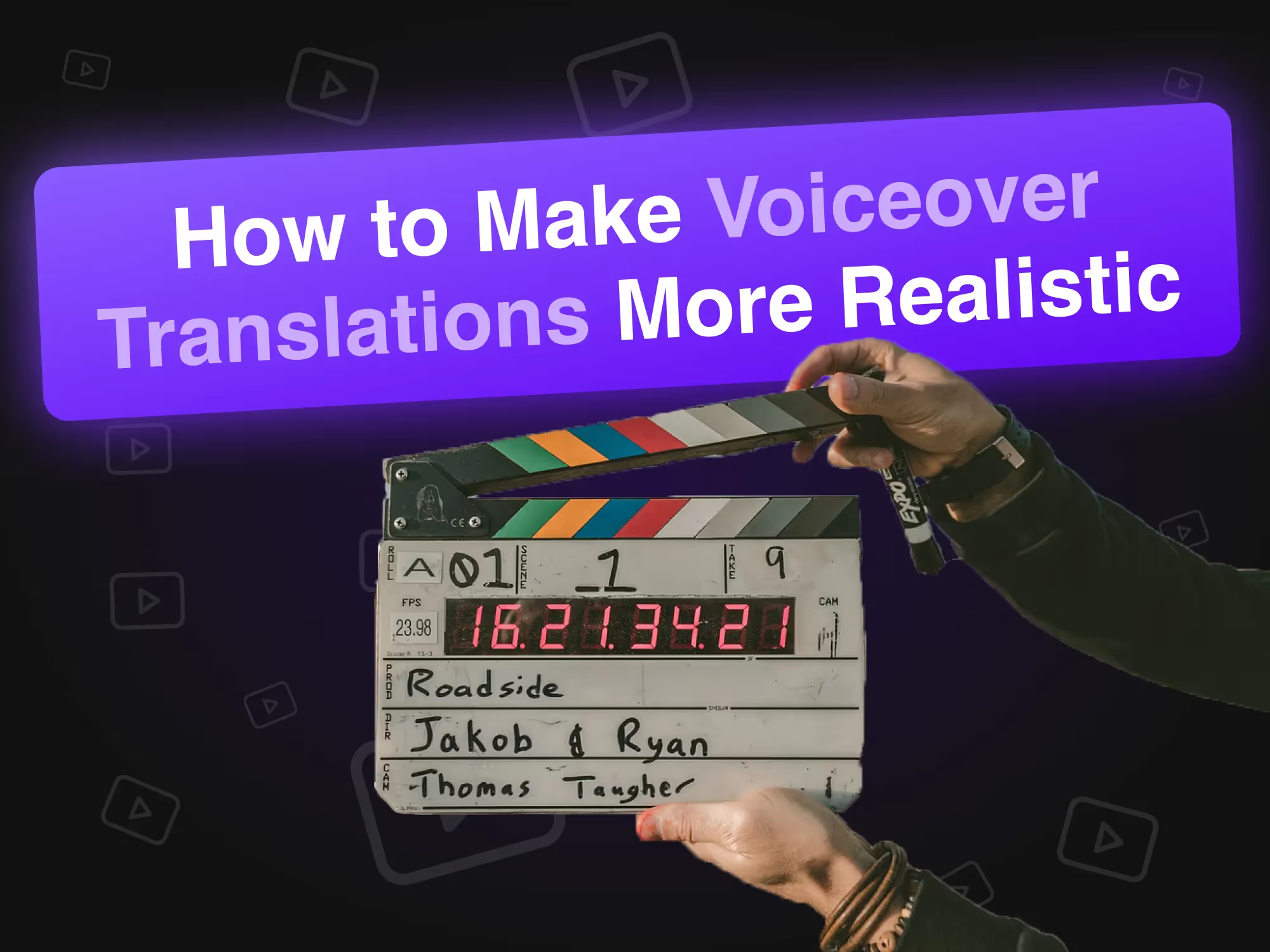Translating content from Japanese to English, or the other way around, is a major challenge for multinational enterprises. For the past half-century of globalization, organizations have created separate commercials for each region they operate in.
Each of these commercials is painstakingly produced. They required hiring a local script writer or translator, hiring a video and audio production crew in-country, and using a local model to act out the script. This was incredibly costly and labor-intensive. However, the rise of AI translation software has streamlined the entire process.

Today, companies can translate commercials and other business collateral into a new language with the click of a button. This saves huge amounts of money, time, and manpower.
Understanding the Differences Between English and Japanese
Attempting to translate video content from Japanese to English is a difficult undertaking, even for native speakers of both languages. That’s because these languages are from very different language families and share few similarities.
English is a Germanic language, derived from the Indo-European language family. It shares many characteristics with other West Germanic languages like German and Dutch. It also uses quite a few words and shares similarities with Romance languages like Spanish, Portuguese, French, and Italian.
On the other hand, modern Japanese is derived from the Japonic family of languages, which are only spoken in Japan and the Ryukyu Islands. Proto-Japonic likely came from the Korean peninsula roughly 2,000 years ago.
What are the Challenges of Translating Video Content from Japanese to English?
Translating content from Japanese to English, or vice versa, is incredibly difficult. These languages use different cultural nuances and expressions that don’t translate clearly. They also have vastly different structures, making it difficult to understand and translate the speaker’s original meeting to a new language.
Japanese also relies on the context of the conversation and different levels of politeness/social rank to modify words. These modifications aren’t present in English. This means it can be slightly easier to translate Japanese to English, but translating from English to Japanese is very challenging unless you understand the context of the conversation and the social standing of those being spoken to.
In addition to the grammar and contextual modifiers, these two cultures are vastly different. These differences make translating cultural nuances, humor, and regional expressions even harder.
Why Choose AI for Video Translation?
AI video translators are revolutionizing the marketing and business world. In the past, businesses had to work with a professional translator to convert content into a new language.
These highly skilled translators spent decades developing a native mastery of their chosen languages. They also studied the local culture to understand and translate cultural nuances like humor, shared experiences, and common expressions.
Unlike human translators, cutting-edge AI tools can rapidly translate text and videos into a new language in mere seconds.
These platforms are saving companies huge amounts of money. They also streamline the translation process itself, allowing organizations to translate long videos in real time and increase their marketing reach by launching advertising campaigns in numerous languages.
By scaling marketing campaigns without increasing cost, businesses can grow globally and acquire new customers without outside investment or taking on debt. This is an incredible force-multiplier and evens the playing field between small businesses and global enterprises.
How Does Video Translation Work?
The industry’s top AI video translation tools, like AKOOL, use machine learning algorithms and huge datasets to train their AI tool on how to accurately translate content into a new language.
In addition, AKOOL uses voice recognition, lip sync technology, and dubbing to translate content into a new language using the same model and voice. This is an incredible benefit since it helps companies maintain brand consistency across the world.
AKOOL is also able to translate cultural nuances and integrate idioms (local folksy expressions) into content. This level of detail helps audiences immerse themselves in your content. Commercials look and feel as if they were created by a local, native speaker.
Lip Sync Automation
Lip sync automation is AKOOL’s most impressive and useful translation feature. Not only can AKOOL translate in-video text and audio tracks, but the platform will also adjust your model’s face to match the new translation. If you’re translating from English to Japanese, the AI model’s facial movements, emotions, and expressions will match the new transcript.
This revolutionary lip sync automation creates an immersive, realistic experience for viewers. They’ll think that they’re watching a native speak to them, rather than an AI avatar whose facial movements were changed to match the new language.
The Process
Translating a video from Japanese to English is simple with AKOOL. To get started, follow the steps below. You’ll produce your first high-quality foreign advertisement in minutes.

Step 1: Create an Account with AKOOL

Step 2: Select the Video Translate tool from the Platform dropdown menu

Step 3: Upload the source video (select a premium plan for 1080p or higher resolution)

Step 4: AKOOL will auto-detect the source language and you’ll choose the target language

Step 5: Click Generate Premium Results to start the translation
Benefits of Japanese to English Video Translation Using AI
Enterprise marketing teams at many of the world’s largest Fortune 500 are already raving about the benefits of AKOOL’s AI video translation platform. These benefits include:
- Global Reach: Reach potential customers across the globe by using AI video translation to create multiple marketing campaigns that appeal to local audiences.
- Reduced Costs: Dramatically reduce the cost of creating an advertisement by eliminating the need for professional models, videographers, and post-production editing.
- Greater Accuracy: Industry-leading platforms like AKOOL are even more accurate than many professional translators, plus they complete the job in a fraction of the time.
- Improved Engagement: Generate more engagement from international audiences by creating content in their local language, using common expressions and phrasing that immerses them in the experience.
- Automated Text Translation: AKOOL not only translates audio and video tracks into new languages; it’s also capable of translating subtitles, on-screen writing, and other marketing materials as well.
Accuracy and Quality of Translations
When selecting a Japanese to English translation service, the accuracy and quality of translations are crucial factors to consider. The following elements contribute to providing effective and contextually appropriate translations:
- AI-Powered Platform: Services that use AI-driven translation platforms often provide fast and accurate translations, leveraging advanced language models to improve performance over time.
- Context-Aware Translations: The best services offer context-aware translations that consider the surrounding text, ensuring that phrases are not only linguistically correct but also culturally appropriate.
- Cultural Nuances: Understanding cultural nuances is key to ensuring that translations reflect the intended meaning and tone, especially when adapting materials for a new audience.
- Native Speaker Expertise: Native speaker involvement ensures that translations account for subtle linguistic details, making them sound natural and fluent in English.
- Transcribed and Proofread: Quality services offer transcribed and proofread content, ensuring the final translation is error-free and ready for use.
- Voice Cloning and Lip Sync: For multimedia content, voice cloning and lip sync technologies can be used to match the translated text with the original speech or animation, offering a seamless experience for viewers.
- Text Editor: Advanced text editors integrated into translation services help users make adjustments and fine-tune translations to ensure accuracy and readability in the target language.
By considering these factors, users can choose a translation service that provides accurate, culturally relevant, and high-quality translations for their needs.
Supported Languages and Flexibility
When selecting video translation tools, the range of supported languages and the tool’s flexibility play a critical role in ensuring global outreach and versatility for diverse content.
- Multilingual Support: A robust translation tool offers multilingual support, enabling users to translate content into multiple languages and broaden their audience reach, regardless of geographical location.
- Language Pairs: Tools that support various language pairs (e.g., Japanese to English, Spanish to French) offer flexibility in catering to a wide range of content and global markets.
- Dialects and Accents: To ensure accurate localization, it’s important that the tool supports different dialects and accents, particularly when working with languages that have regional variations.
- Avatar Video Creation: Some advanced tools allow for avatar video creation, which can help in delivering localized content with virtual characters, supporting the global appeal of videos.
- Subtitles and Translated Languages: Offering subtitles in multiple translated languages helps reach a broader audience and enhances accessibility, particularly for non-native speakers.
- Video Formats and Output Format: Ensure the tool can handle various video formats and provide the desired output format, whether for social media, broadcasting, or other platforms.
- Source File Language: The ability to recognize and work with different source file languages is essential for smooth translation and seamless integration of text, voice, and visuals.
- Voice Types: When translating videos with voiceovers, the tool should offer voice types that match the tone and style of the original content, making the translation sound authentic and natural.
By considering these features, users can select a video translation tool that offers maximum flexibility, ensuring they can localize their content for diverse audiences across the globe.
Compatibility with Major Video Platforms
AKOOL is compatible with the world’s leading video platforms, including YouTube, Vimeo, Instagram, and TikTok. Produce high-quality video advertisements that can be quickly updated to your preferred social media site in minutes with AKOOL’s AI video translator.
Many organizations are also turning to international and locally popular social media platforms— like QZone, WeChat, Weibo, and more—to reach international customers where they already live. Global enterprises are quickly discovering that AI video translation is the key to competing with local companies that have an established customer base and brand identity.
User Experience and Ease of Use

The user experience and ease of use are essential for streamlining the video translation process. Key features that enhance usability include:
- Easy-to-Use Interface: A simple interface allows for quick navigation, making the tool accessible even to beginners.
- Automatic Transcripts: Automatic transcripts save time by converting speech to text, speeding up translation and transcription processes.
- AI Voiceovers: AI voiceovers provide high-quality, automatic translations in multiple languages, eliminating the need for manual recordings.
- Preview Translated Video: A preview feature ensures the translation integrates smoothly with the video before finalizing.
- Timing Edits: Timing edits ensure that subtitles and voiceovers are perfectly synchronized with the video’s actions.
- Collaborate: Collaborative features enable teams to work together efficiently, improving translation quality.
By prioritizing ease of use and efficient processes, video translation tools can make content localization faster and more accessible for users.
Start Translating Japanese Videos to English Using AI
Start translating your existing content into new languages with emerging AI video translation tools. You can immediately increase your organization’s global reach and acquire new customers without a budget increase. AI tools help you quickly translate video advertisements into new languages without additional cost.
In addition, modern AI tools like AKOOL are just as accurate (if not more) than professional translators and they’re able to translate critical cultural nuances and expressions into target languages. Just as importantly, AKOOL helps you maintain company branding across regions and languages within the constraints set by your team.
Become a truly global company and start reaching billions of potential customers by translating your content into new languages with AKOOL.









